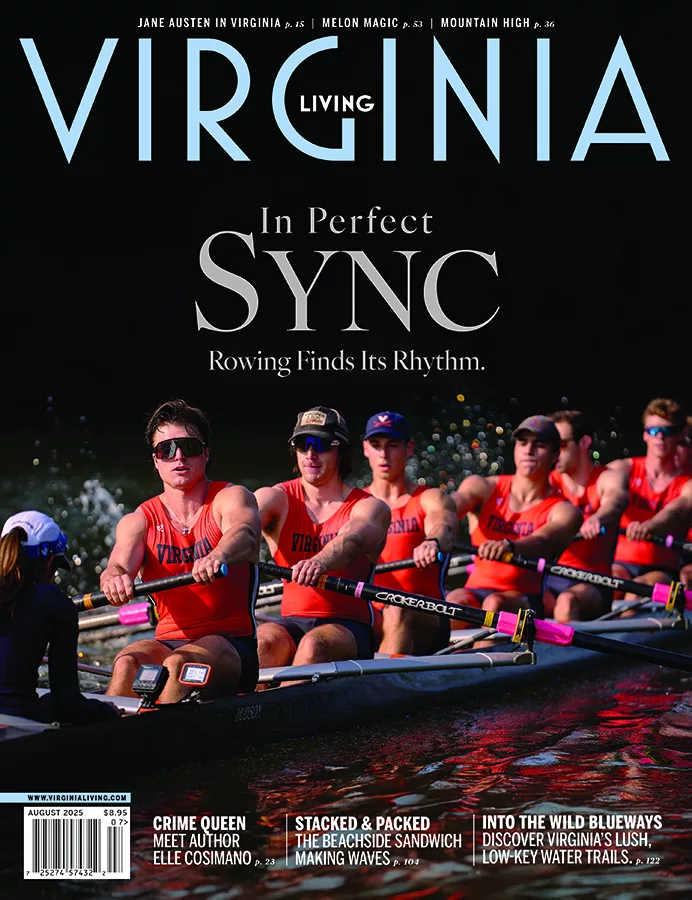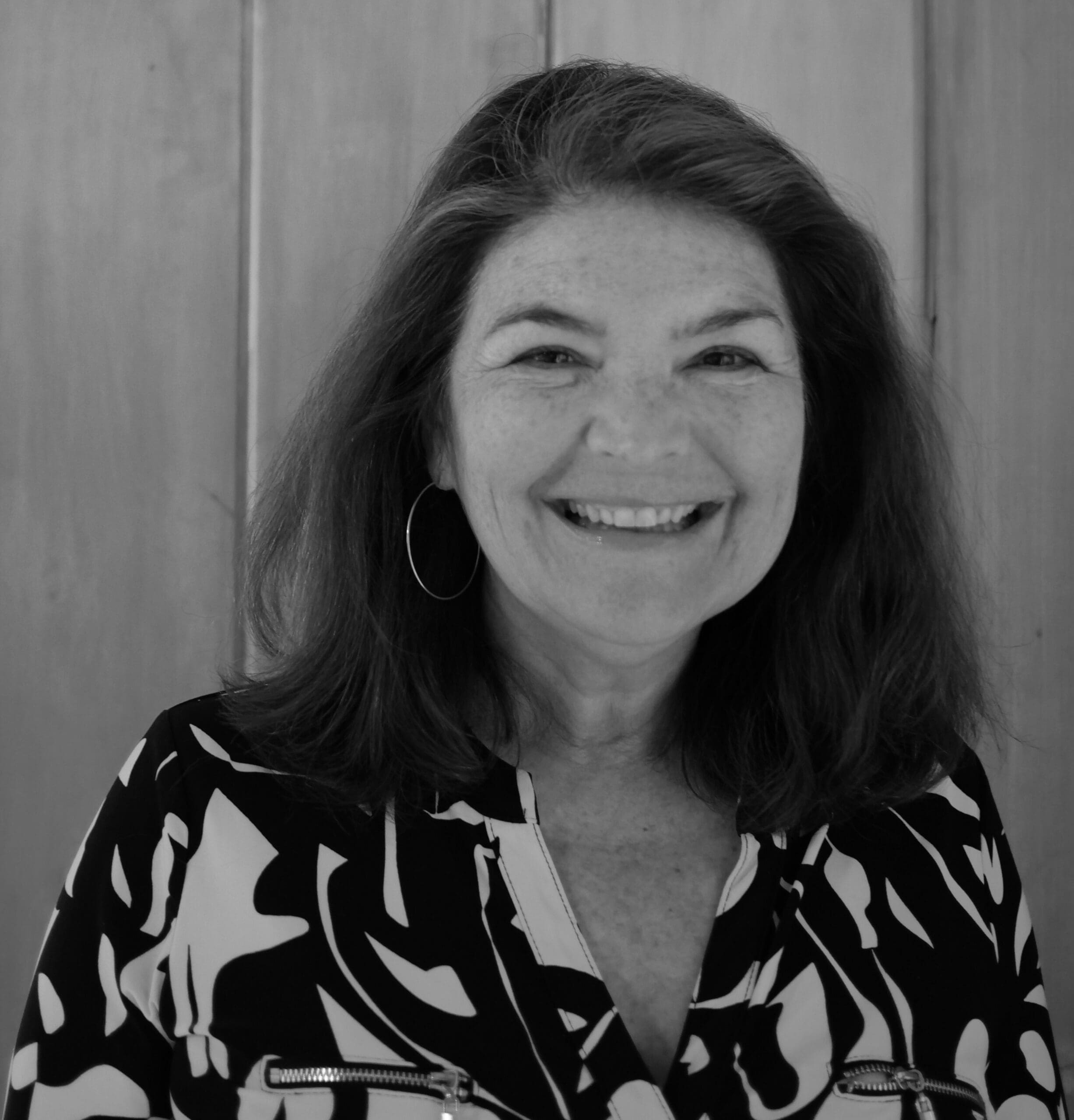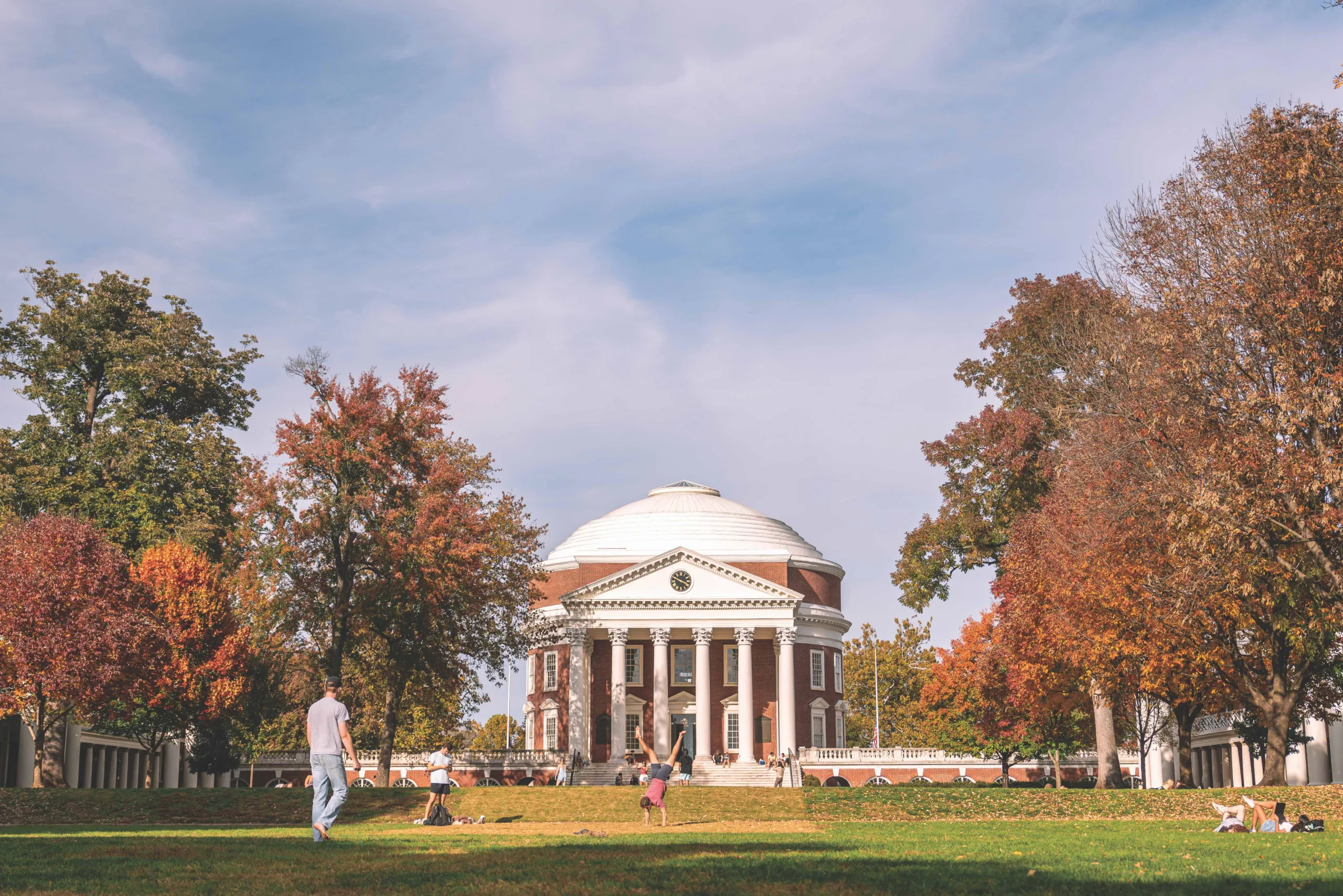When Pixie and John Ruhlmann want to get away from it all, they head west to their country home in Strasburg.

Sycamores surround the Italianate style farmhouse.
Photo by John Cole / courtesy of Anthony Wilder
Sitting at a table in their light-filled living room, a view of the Massanutten Mountains rising in the distance beyond a pasture where a restored log cabin dating to 1780 sits, Pixie and John Ruhlmann reflect on their many years-long search that led them to “Sycamore Bend Farm.”
“Saturday morning, it would be my routine: I’d get up at 5:30 a.m., drink coffee, fire up the computer, and do my Internet real estate searches,” says John. “And Pixie would come downstairs and say, ‘Are you looking at that little blue house again?’ I kept coming back to it.”
The couple sought a country home to provide respite from their hectic city life in Bethesda, Maryland, where John works as chief accounting officer of the D.C.-based Advisory Board Company, and Pixie, a petite, energetic, stay-at-home mother of four, formerly worked as a project manager for a software company.
The dream home would be within two hours of their primary residence in Bethesda, sit on at least 50 acres, and have some history.

The house sits on 68 acres in the Shenandoah Valley; the couple’s vintage Ford pickup truck; a restored log cabin on the property.
Photos by John Cole / courtesy of Anthony Wilder
“I’m a Civil War buff and a history buff, so in my mind I was kind of working in an arc from Gettysburg down through the Shenandoah Valley,” John says. Additionally, “we wanted a controlled view,” says Pixie—one that could not be subdivided or developed in the future, without their permission.
When the price dropped on the “little blue house,” they headed out west to see it. After they passed the charming, hilly town of Strasburg, the roads grew narrower and more primitive the farther out they drove.
“It was like a country song,” says John. Asphalt lanes turned into a gravel road along the Shenandoah River, ending at the foot of the home’s dirt road drive. “And as we started coming down that long driveway, saw the blue house and the beautiful view, I knew right then this was the place for us.”
The couple later learned that the mountains included the federally protected George Washington Forest—so no threat of future developments there—and realized they liked the bones of the house and the challenge it presented. “We wanted to take a house that needed repair and get it ready for the next 100 years,” says John. “And frankly that’s what we’ve done with this place.”

The renovated kitchen.
Photo by John Cole / courtesy of Anthony Wilder

The formal dining room.
Photo by Lincoln Barbour

The foyer.
Photo by John Cole / courtesy of Anthony Wilder

The updated guest bathroom.
Photo by John Cole / courtesy of Anthony Wilder

The master bathroom.
Photo by John Cole / courtesy of Anthony Wilder

Seating area off the kitchen.
Photo by John Cole / courtesy of Anthony Wilder

The dining room.
Photo by Lincoln Barbour
In 2010, the Ruhlmanns purchased the Italianate farmhouse, originally built as a log cabin in 1817 and then expanded in 1867 and nestled on 68 acres in the Shenandoah Valley. Now painted a buttery yellow, the home features a large front porch, ornate trim, and a widow’s walk atop its low-pitched roof. In the mornings, fog often engulfs the surrounding hills, gradually receding to reveal the flat-topped ridge of Signal Knob, an important Civil War site.
“Both Union troops and Confederate troops, whoever was controlling the mountain range, would set up signals at certain high peaks,” explains John. Using flags and torches, “They’d signal to one another on these different points.” Controlled by Confederate troops, “Signal Knob was the northern-most terminus of that signaling process,” he adds. The signal station played a critical role in the Confederates’ initial success during the Valley Campaign in the summer of 1864, when Maj. General Philip Sheridan arrived in the area with 40,000 Union troops.
“One of the first things we did when we bought this house was hire a local historian to do a genealogy of the house,” says Pixie. The thick binder holding plastic-sleeved pages traces the home’s history from the original land grant from Lord Fairfax in 1750 all the way up to the Ruhlmanns.
First on the list for renovation was the historic log cabin on the property. Local artisans created beautiful work, Pixie says, “but Valley time is different than D.C. time in project management. It took a lot longer than we thought it would.”
When it came to the house, the couple turned to Anthony Wilder, principal in his eponymous design/build firm based in Cabin John, Maryland, with whom they had worked on two other renovation projects.
“We wanted to work with Anthony’s group [initially] because we knew they did quality work, and they have a great reputation,” says John. “And we’re still friends after three projects,” says Pixie, with a laugh.
The couple began renovations in 2013, with a vision: If Joseph Funk, the owner of the home in 1867, were to walk back into the house in 2018, he would recognize it.

Ornate corbels adorn the porch.
Photo by Lincoln Barbour
While the couple maintained the structure’s historical integrity, the home’s age necessitated some accommodations—for instance, in the replication of the ornate corbels that highlight the trim of the Italianate front porch.
“They were painted, and they looked beautiful, but when you put your finger in them, they were completely rotten. What was holding them up was all those years of paint. We tried to find some new materials, but nothing was anything near the character, so we had them copied and remade in PVC,” says Pixie.
Stepping inside the front door, guests arrive in a foyer with a turned staircase. A niche under the stairs holds a small coatroom. Wilder’s firm peeled back the walls to reveal the original log formation underneath.
A parlor welcomes guests to the left of the foyer; to the right, a formal dining room leadsto the completely renovated kitchen. Over the dining room table, a large crystal chandelierfrom Italy—selected by Pixie—offers a nod to the home’s continental design, popular in the U.S.in the mid-to-late 1800s.
Flowing seamlessly from the original footprint, a new addition at the back of the house includes a living room and bathroom on the first floor, and a master bedroom, sitting room and bath. Throughout the house, the molding varies in size from room to room—hewing closely to the original, at the Ruhmann’s request. Wilder’s carpenters had special saw blades made to create the molding.
The firm even replicated the Yankee gutter system built into the roof, says John. “It’s like a copper trough going along the perimeter of the roof that you’d never see, but it was important to me and to Pixie to duplicate what was done in 1867.” Local workers crafted many of the details on the house.

John and Pixie Ruhlmann
Photo by Lincoln Barbour
“One thing about John that I noticed when he talked about the farm, I always got this image of him like a Ben Franklin kind of guy that would be sitting in a chair with wire rim glasses because he just has an old soul,” says Wilder. “They’re really a spectacular couple. For them to manifest this house, for us to be a part of building it, we were really honored.”
Stepping around the property, John points out the renovated corncrib, which still has the original riggings for the carriages that once passed through its center. The couple leases some of their pastures to a local farmer, who has 40 heifers and a bull. On the gently rolling Shenandoah River nearby, John enjoys fly-fishing, while Pixie spends time paddling her kayak and tubing.
“Certainly, we see deer and turkeys and snapping turtles and black snakes a lot, and foxes. We’ve heard coyotes. We get groundhogs, unfortunately,” says John. Other wildlife has included a black bear, bald eagles, blue heron, owls and peepers.
From the front porch, they point out the majestic Sycamore tree that inspired the home’s name, and beyond it, the idyllic body of water known as Turtle Pond.
For them, “Valley time” means no Internet or Wi-Fi—and plenty of room to breathe.
They head in “on 66, which can be a crazy interstate, but once you pass Haymarket, which is exit 40, you’re starting to get into the low hills, the Piedmont,” says John. “You just feel the stress melt away.”
When she sees the mountains, Pixie says her heart rate and breathing begin to slow. “It’s in every part of your being. Coming out here, it’s like our little slice of heaven—and we know we’re going to be there soon.”
This article originally appeared in our October 2018 issue.









